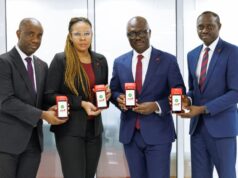FRI, AUGUST 25 2023-theGBJournal |The National Bureau of Statistics Thursday, launched the new and enhanced Nigeria Labour Force Survey (NLFS).
The new NLFS unveils a set of labour force indicators designed to provide unparalleled insights into the dynamics of the workforce in Nigeria.
The Nigeria Labour Force Survey (NLFS) was conducted by the National Bureau of Statistics (NBS) in collaboration with the World Bank (WB) and the International Labour Organisation (ILO) in response to the labour market dynamics.
This report covers the fourth quarter of 2022 and the first quarter of 2023, presenting an in-depth analysis of key labour market indicators including unemployment, underemployment, informal employment and hours worked.
The last labour force report published was amidst COVID-19 pandemic for the period of Q4 2020, which reported a headline unemployment rate of 33.3% and an underemployment rate of 22.8%.
As part of its routine methodological review and enhancement processes, NBS commenced work in 2021 with the World Bank and the International Labour Organisation (ILO) to update the methodology and processes for conducting the NLFS, which culminated in the results being presented in this report.
The Statistician-General of the Federation/Chief Executive Officer, NBS, Prince Semiu Adeyemi Adeniran explained the modalities of the survey.
”The NBS embarked on a revision of the methodology through the adoption of the 19th International Conference of Labour Statisticians (ICLS) ‘‘Resolution concerning statistics of work, employment, unemployment, and labour underutilisation’’, and the latest International Labour Organisation (ILO) model questionnaire which includes unemployment among persons engaged in ‘‘Own Consumption work’’.
The revised methodology aligns with Nigeria’s neighbours in Africa such as Ghana, Niger, Chad, Cameroon, Benin Republic, Gambia etc, in line with international best practices,” he said.
According to him, the enhanced methodology which was informed by the need to produce comparable labour statistics focuses on the review of definitions and concepts, data collection, coverage etc.
The revised methodology defines employed persons as those working for pay or profit and who worked for at least one hour in the last 7 days, and considers underemployed persons as those working less than 40 hours per week and declaring themselves willing and available to work more. Unemployed persons are those not in employment but actively searching and are available for work (i.e did nothing for pay or profit).
In addition, working-age population covers ages 15 and above, and a distinction is made between commercial and subsistence agriculture in the revised methodology.
The old methodology defines the working-age population as those within the age bracket of 15-64 years, considering those working between 20 and 39 hours as underemployed, and those working between 1 and 19 hours as unemployed (including those who did nothing).
Also, subsistence agriculture and temporary absentees from employment work were not properly represented in the old methodology. These improvements, among others, captured in the revised computations will make Nigeria’s Labour Force data comparable with other countries.”
Key highlights of the Report are:
…About three-quarters of working-age Nigerians were employed – 73.6% in Q4 2022 and 76.7% in Q1 2023, indicating that most people were engaged in some type of job for at least one hour in a week, for pay or profit.
…The unemployment rate was 5.3% in Q4 2022 and 4.1% in Q1 2023 – This aligns with the rates in other developing countries where work, even if only for a few hours and in low-productivity jobs, is essential to make ends meet, particularly in the absence of any social protection for the unemployed.
…The share of wage employment was 13.4% in Q4 2022 and 11.8% in Q1 2023, while more Nigerians operate their own businesses or engaged in farming activities, recorded at 73.1% in Q4, 2022 and 75.4% in Q1, 2023.
…About one-third (36.4% in Q4 2022 and 33.2% in Q1 2023) of employed persons worked less than 40 hours per week in both quarters. This was most common among women, individuals with lower levels of education, young people, and those living in rural areas.
…Underemployment rate which is the share of employed people working less than 40 hours per week and declaring themselves willing and available to work more was 13.7% in Q4 2022 and 12.2% in Q1 2023.
…The rate of informal employment including agriculture among the employed Nigerians was 93.5% in Q4 2022 and 92.6% in Q1 2023.
”The report not only offers a snapshot of the current employment landscape but also provides a foundation for evidence-based policymaking. It’s insights into labour market statistics empower stakeholders to make informed decisions that can shape the country’s labour market and economy,” Adeniran said.
Twitter-@theGBJournal|Facebook-the Government and Business Journal|email:gbj@govbusinessjournal.com| govandbusinessj@gmail.com










